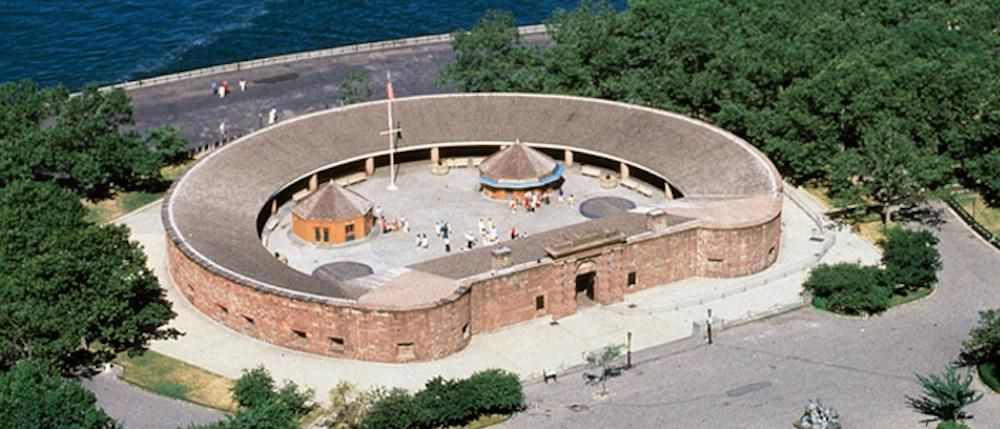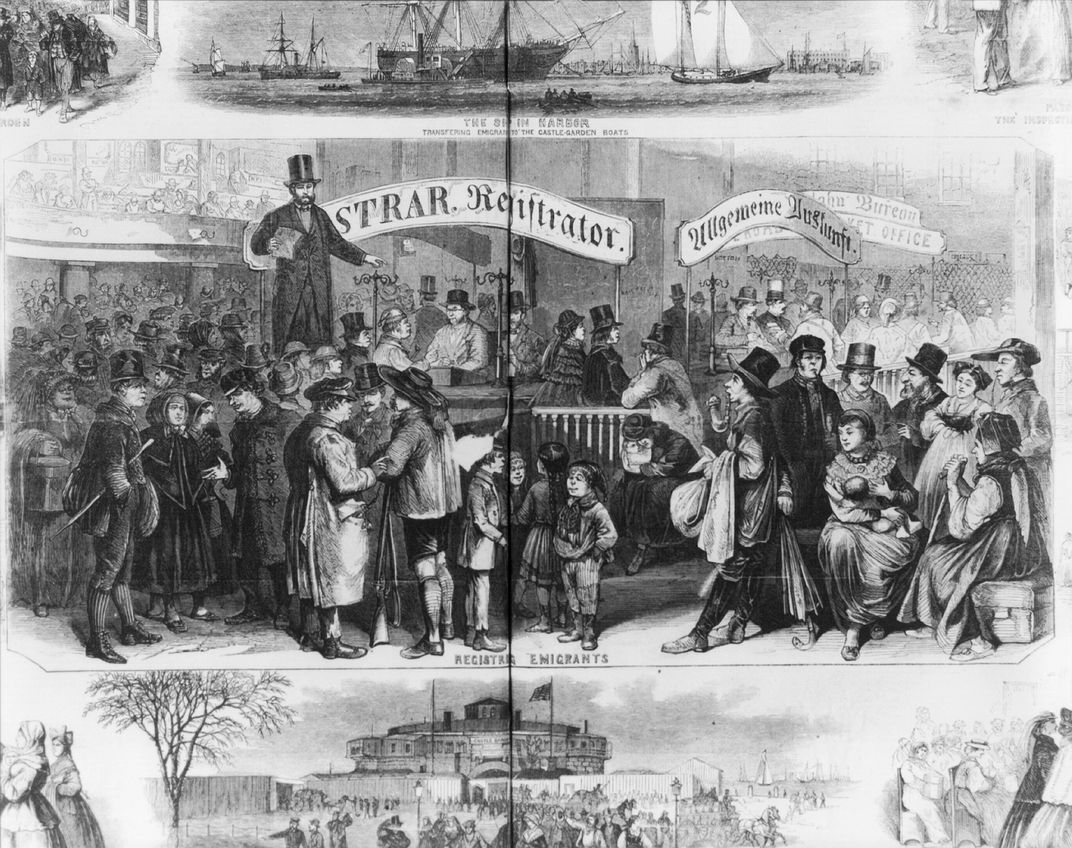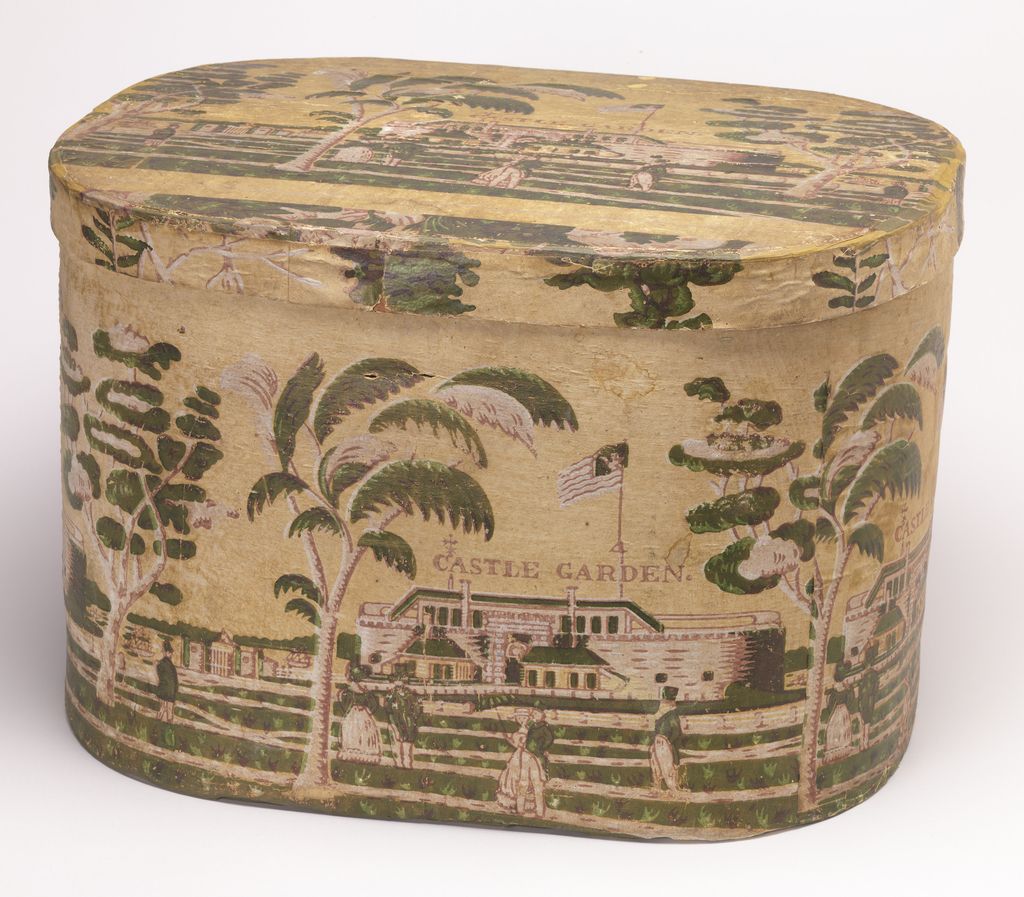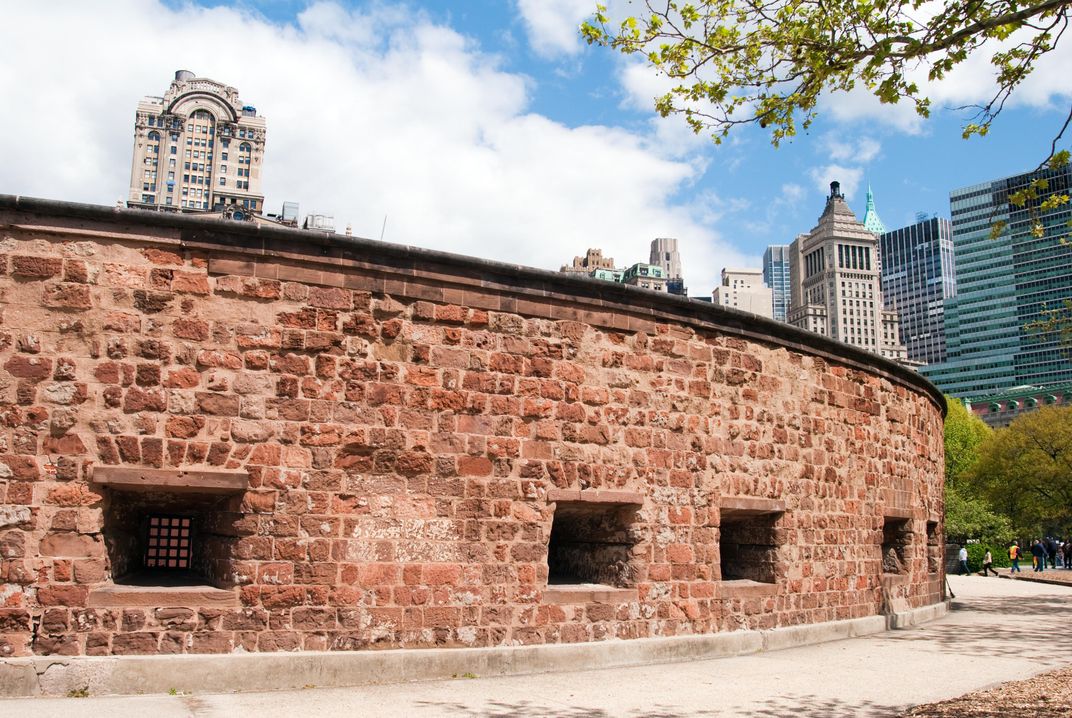America’s First Immigration Center Was Also an Amusement Park
Castle Garden went from fort to pleasure grounds to precursor of Ellis Island
It’s the 1830s and you’re in need of the most luxurious amusement in Manhattan. Naturally, you grab your bonnet and parasol and head to…Battery Park? Yes, that Battery Park. In the early part of the 19th century, it was home to a place called Castle Garden, which served as one of America’s most popular amusement parks until it became the precursor to Ellis Island.
The castle-like fort at the tip of the Battery wasn’t always a pleasure ground. Rather, it originated during a time of war. In 1808, foreseeing the danger of British invasion, New Yorkers started to build a series of forts to defend the harbor. Southwest Battery, as it was called, was built on a manmade island right off the shore of the southern tip of Manhattan. It was outfitted with 28 cannons and military fortifications.
Though the British did end up invading the United States during the War of 1812, laying waste to Washington, D.C., they never attacked New York. After the war, the fort was decommissioned and the Battery was filled in with city garbage to make it part of Manhattan. The government leased Castle Clinton, as the fort was known, to New York City, which renamed it Castle Garden and turned it into an amusement park.
Roller coasters and cartoon characters weren’t yet part of the definition of “amusement park,” but that didn’t bother fashionable New Yorkers. They flocked to Castle Garden for harbor views, a meal at its huge restaurant, and perhaps an opera or a fireworks show. “The illuminations, bands of music, and multitudes of people,” wrote one observer, “give it the appearance of an enchanted castle. The sea breeze, with delicious coolness, breathes its freshness from the bay. Refreshments of every kind are to be obtained at moderate cost; nor must a favourite American beverage called mint julep, a sort of punch, pass unnoticed in the catalogue of the delicacies, with which the place abounds.”
Castle Garden got fancier and more popular as the years went by. Its opera house became world-famous in 1850, when P.T. Barnum presented opera sensation Jenny Lind, the "Swedish Nightingale" there. Her American debut attracted 5,000 spectators and made her an instant hit. The park also hosted exhibitions of the latest in science and technology, like a demonstration of an underwater electronic explosive and the newfangled telegraph. Or, you could simply chill in the park’s saltwater baths for the “invigorating experience of…pure, renovating ocean-brine.”
But big changes were afoot in the United States, and the lazy days of Castle Garden ended in 1855. So many immigrants had been pouring into New York through its docks that the city needed a central processing location, so it repurposed Castle Garden and turned it into the Emigrant Landing Depot. It was New York’s first immigration center, and soon tens of thousands of people were pouring through its gates. Each immigrant was given a health examination, registered and given water for bathing before being released into the city with information about his or her final destination.
All in all, over 8 million immigrants passed through Castle Garden—two out of every three immigrants who entered the U.S. between 1855 and 1890, when Ellis Island was opened. The scene inside was so chaotic that it even sparked its own word: Kesselgarden, a Yiddish word that refers to a confusing, noisy situation and that emerged from Eastern European immigrants’ pronunciation of the name of the center.
Today, you can still catch a glimpse of Castle Garden in Battery Park—just look for the castle-like stone fortifications. The site is a national monument and you can search for the names of ships and immigrants who passed through Castle Garden on its website. It may be less known than Ellis Island, but the site was just as important to the millions of immigrants—and pleasure seekers—who passed through its gates.
/https://tf-cmsv2-smithsonianmag-media.s3.amazonaws.com/accounts/headshot/erin.png)




/https://tf-cmsv2-smithsonianmag-media.s3.amazonaws.com/accounts/headshot/erin.png)